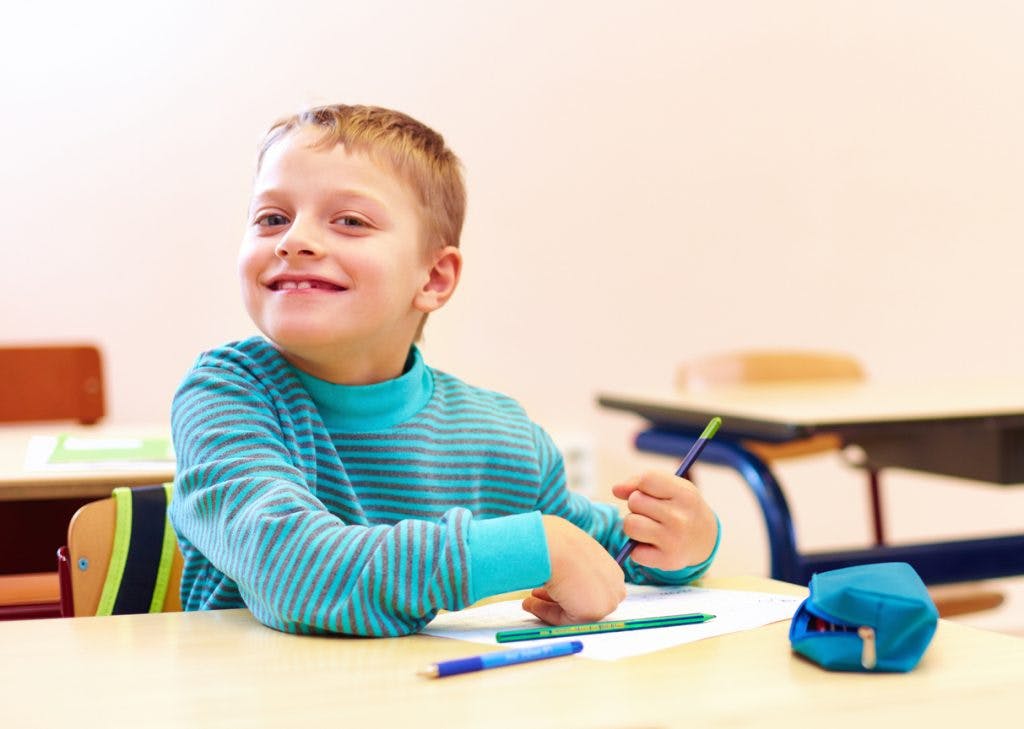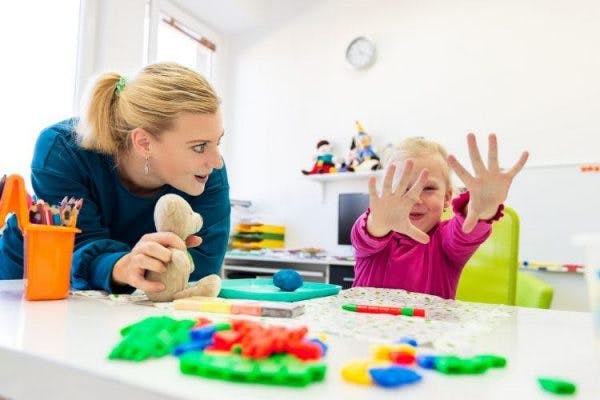Learning disabilities are fairly common among children with cerebral palsy; however, they are not directly related to CP. Instead, they are an associative condition caused by additional damage to the developing brain.
Generally, learning disabilities are more prevalent in individuals with more severe forms of cerebral palsy. This makes sense because the severity of one’s cerebral palsy is primarily linked to the amount of damage to the brain.
This article will further explain the link between cerebral palsy and learning disabilities, as well as effective ways to manage a learning disability.
What’s the Link Between Cerebral Palsy and a Learning Disability?
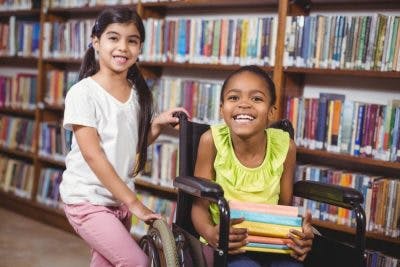
A learning disability is not a direct outcome of cerebral palsy. Cerebral palsy is a motor disorder, meaning that it primarily affects one’s ability to control their movements, balance, and posture.
However, about 50% of people with CP have some sort of learning impairment. Although learning disabilities are common among cerebral palsy patients, they’re also common among those with brain injuries in general.
A University of Cambridge study suggests that learning difficulties are not linked to specific regions of brain damage, but rather due to poor connectivity between neural pathways in the brain.
Children with cerebral palsy and a learning disorder still have cognitive functioning and are very much capable of learning, sensing, and reasoning. However, depending on the strength of connectivity within the brain, they may require more time and effort to process and learn new skills.
Because learning disabilities occur so frequently among children with cerebral palsy, it’s important to understand what early signs of a learning impairment can look like. Up next, we’ll go over how to identify a learning disability in children with cerebral palsy.
Signs of a Learning Disability in Children with Cerebral Palsy

Generally, learning disabilities aren’t apparent until the child gets older. However, identifying the early signs of a learning disability is critical as it prompts early management, which can help minimize delays in school.
Learning disabilities can range from mild to severe, so children with cerebral palsy can demonstrate a wide range of different symptoms.
Early signs of a learning disability in children with cerebral palsy can include:
- Delayed language skills
- Difficulties communicating or understanding others
- Trouble following directions
- Problems with reading, writing, speaking, spelling, or counting
If you think your child might be demonstrating signs of a learning disability, speak to their pediatrician for a professional evaluation. The earlier a learning disability is identified, the sooner management can begin to set your child up for success.
How Children with Cerebral Palsy Can Manage Their Learning Disabilities
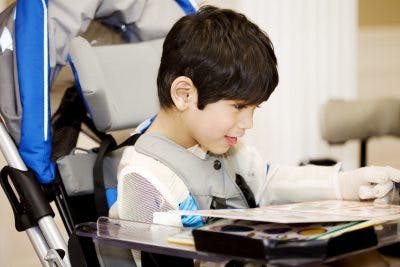
Management for a learning disability is essential because it will help parents understand how to cater to their child’s needs and promote further learning success for their child.
Many children with cerebral palsy and a learning disability struggle to communicate due to impaired mobility and difficulties with speech and language. With sufficient treatment, children with CP can learn to better interact with those around them.
Four professionals that can help your child develop their learning skills include:
- A speech therapist will help your child improve their communication skills so that they can better express when they do not understand something or need help. Speech therapy can help children with cerebral palsy develop their oral motor skills and use of language. If your child is non-verbal, a speech therapist can teach them how to use sign language or augmentative and alternative communication. Speech therapists are also able to address some areas of cognitive deficits, such as difficulties with organization, focus and planning.
- An occupational therapist will teach your child how to improve their fine motor skills. Fine motor skills primarily involve developing functions that require dexterity such as finger movements. Learning how to use body language and gestures can help children with cerebral palsy communicate their needs. Additionally, occupational therapists are able to help develop higher level cognitive skills, such as problem-solving and following multi-step directions.
- A behavioral therapist will help your child manage emotional problems like anger, anxiety, or depression that result from learning difficulties. Instead of throwing a tantrum, children can learn how to use coping strategies or ask for more help or time.
- A special education teacher will work on helping your child learn foundational academic principles. By adapting the general education curriculum to your child’s needs, a special education teacher can help students with differing learning styles to succeed.
All four of these professionals can work with your child one-on-one or in small groups to give them the personalized care they need to overcome learning disability-related challenges and succeed. In the following section, we’ll discuss how children with a learning disability can improve their cognitive functions.
Activating Neuroplasticity to Overcome a Learning Disability
Fortunately, the brain is extremely adaptive and individuals with learning disabilities can train their brains to improve cognitive functioning.
Neuroplasticity is the brain’s ability to rewire itself, and neuroadaptive changes in the brain occur based on demand. Therefore, the more the brain is exposed to certain stimuli, the more it will rewire itself.
By having your child consistently practice using their cognitive skills, their brains can adapt to learn at a quicker pace. Management interventions like speech therapy will provide your child with plenty of activities and tasks they can practice during therapy sessions and at home to stimulate neuroadaptive changes in the brain.
With the right support, resources, and accommodations, children with learning disabilities can learn to improve their cognitive functions.
Teaching a Child with Cerebral Palsy and a Learning Disability
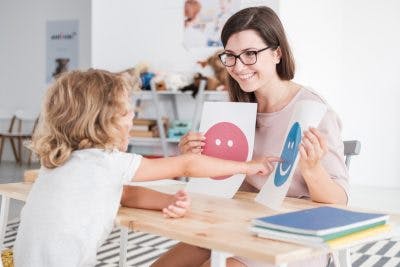
It’s essential to understand that children with learning disabilities are capable of learning; they just need the right support.
Individuals with learning disabilities require personalized attention. Every learning disability is different and it’s essential to take the time to understand the student’s unique strengths and weaknesses.
Below are some tips for teaching a child with a learning disability:
- Set realistic expectations and be patient. Unrealistic expectations can frustrate the student and discourage them from learning.
- Break up lessons into smaller sections. Too much information at once can be overwhelming. Don’t move forward until they are comfortable with the current lesson.
- Provide enough time for the child to finish their work and speak. Students with a learning disability can take longer to process information and respond. Many times, they’re very much capable of finishing their work and answering questions, they just need enough time to do so.
- Get creative and experiment with various teaching methods. Every child has their cognitive strengths and weaknesses. If your student responds well to visual stimulation, use lots of pictures and diagrams. If your student is better at orally expressing themselves, focus more on discussions than writing.
- Focus on engagement. It’s essential for children to actively participate in their learning in order to improve their cognitive functioning. Communication is crucial, so try to regularly get feedback by asking the student how they feel about a certain topic or whether something is too easy or difficult for them.
By following these tips, teachers can get to know their students better and help them work through their learning disabilities to succeed in school.
Understanding Cerebral Palsy and Learning Disabilities: Key Points
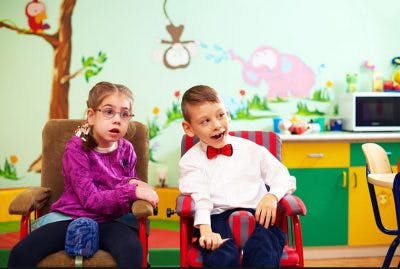
Although learning disabilities are common in individuals with cerebral palsy, they are not direct outcomes of CP.
When a learning disability is combined with motor impairment, children can struggle to communicate their needs. Luckily, learning disabilities can be improved through neuroplasticity. Consistent practice can stimulate neuroadaptive changes in the brain and strengthen the neural pathways for developing new skills.
Every learning disability is unique, so personalized, one-on-one attention is ideal. Hopefully, this article helped you understand that with the right support, resources, and accommodations, children with cerebral palsy can overcome their learning disabilities.

